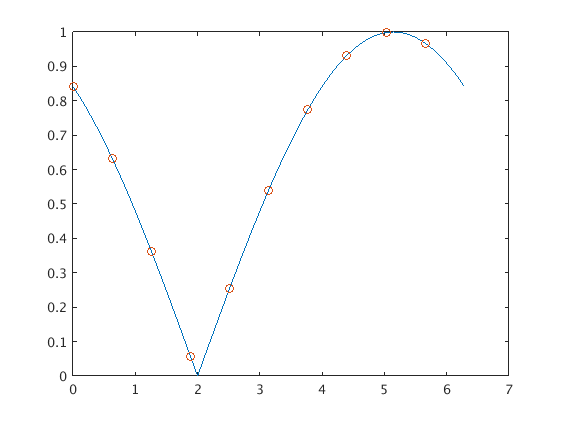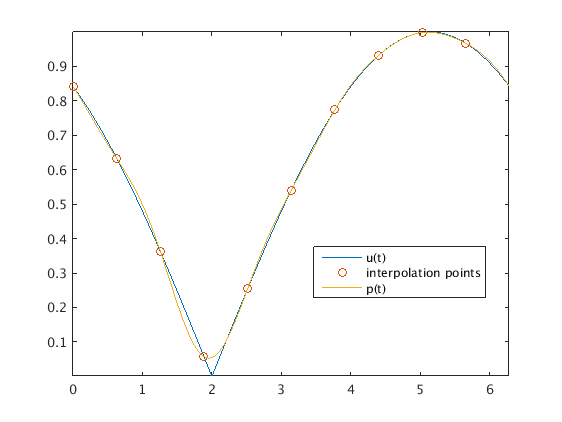Interpolate a periodic function by trigonometric polynomial, even number of nodes
Contents
Plot function and interpolation points
We want to approximate the 2 pi periodic function u(t) = abs(sin(t/2-1)) using  with n=5. This space has dimension m=10, so we use 10 equidistant data points j*2*pi/m, j=0,...,m-1.
with n=5. This space has dimension m=10, so we use 10 equidistant data points j*2*pi/m, j=0,...,m-1.
u = @(t) abs(sin(t/2-1)); m = 10; % even number of data points t = (0:m-1)'*2*pi/m; % interpolation points U = u(t); % data used for interpolation mp = 1000; % for plotting use finer mesh of mp=1000 equidistant points tp = (0:mp-1)'*2*pi/mp; plot(tp,u(tp),t,U,'o'); hold on % plot function at points tp, points used for interpolation

Apply the Discrete Fourier Transform
We want to find the interpolating function

We use the FFT to obtain the coefficient vectors ![$[a_0,\ldots,a_n]$](cossin_example_eq02095258169368297628.png) and
and ![$[b_1,\ldots,b_{n-1}]$](cossin_example_eq03244078212792457232.png) .
.
[a,b] = cossin_transform(U); % coefficients of interpolating function
Extend the coefficient vectors with zeros, apply the inverse transform
We want to evaluate the interpolating function on a finer mesh with mp points. We extend the a and b vectors with zeros for higher frequencies.
These padded coefficient vectors ap and bp still represent the same interpolating function, but now the inverse transform yields values on a finer mesh.
K = (mp-m)/2; ap = [a;zeros(K,1)]; % extend a and b vector with K zeros bp = [b;zeros(K,1)]; Up = inv_cossin_transform(ap,bp); % this gives now function values on fine grid with 1000 points tp plot(tp,Up); hold off; axis tight legend('u(t)', 'interpolation points', 'p(t)','Location','best') hold off
